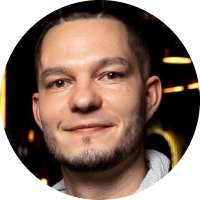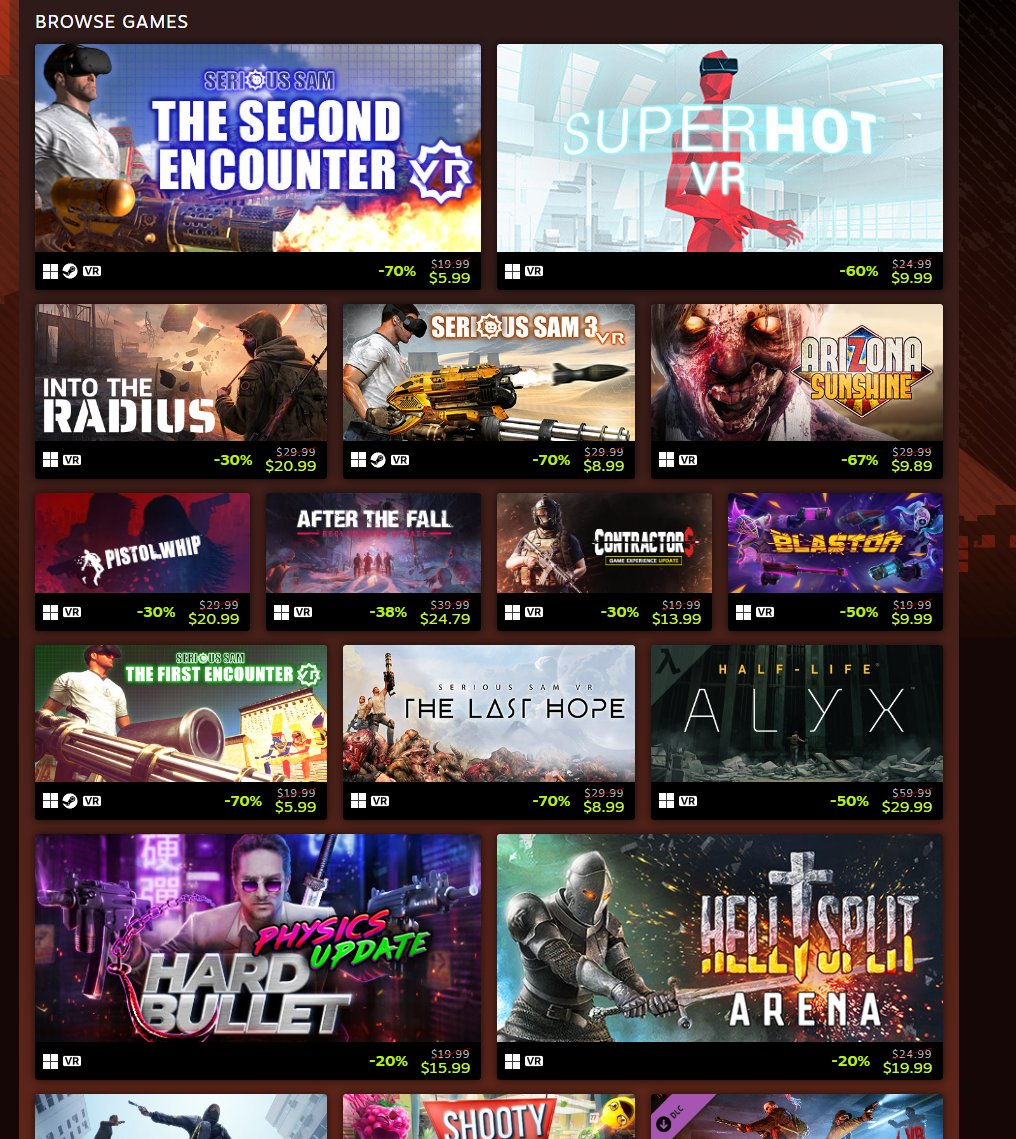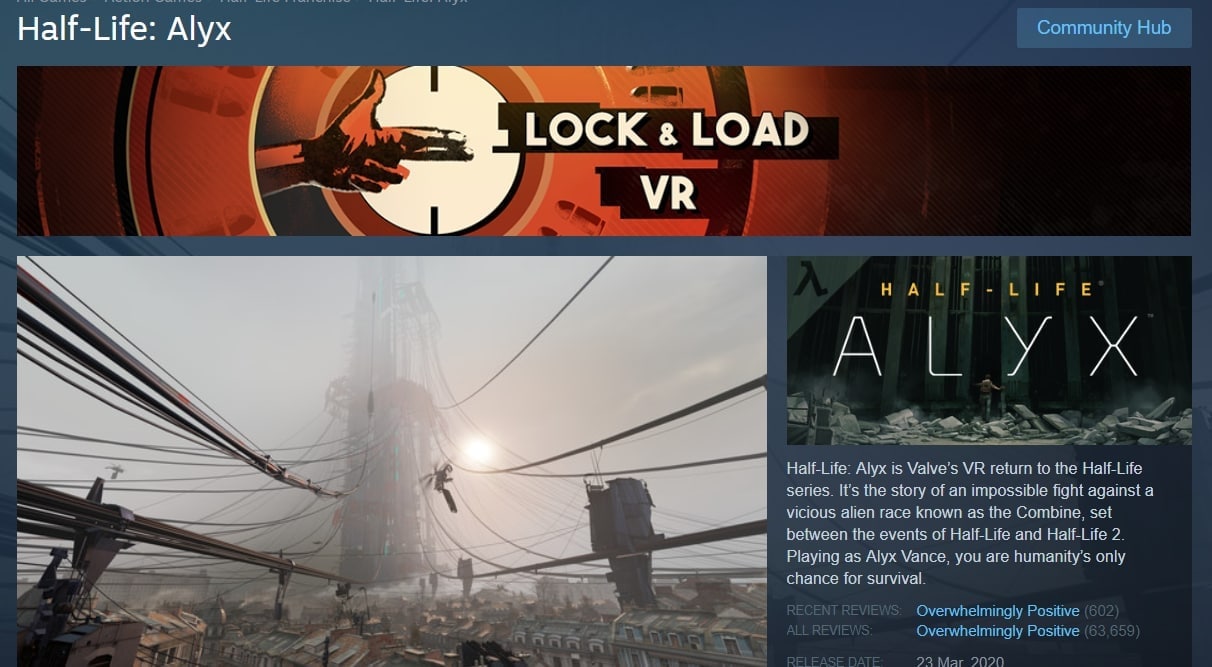After making mobile titles for over 13 years, CM Games has decided to enter the field of virtual reality. Here is how the studio successfully launched a custom Steam Sale event to promote its VR game Into the Radius despite knowing little about the platform and its marketing features.

Serg Kharchenko, Evangelist at CM Games
Hey there! It wouldn’t be an exaggeration to say that CM Games’ path in the gaming industry has taken a rather unique twist. But for starters, a few words about the game, which is the focus of this postmortem.
Into the Radius is an immersive single-player survival shooter designed for VR. Set in the enigmatic Pechorsk zone, players navigate surreal landscapes fraught with dangerous anomalies. Armed with realistic firearms, the mission is to survive, recover mysterious artifacts, scavenge for loot, and unveil the secrets of this unforgiving dystopian world. It’s available on Steam and almost all major VR platforms.

Navigating the dark zones
Making Into the Radius was like stepping into the skin of a werewolf under the full moon — we suddenly found ourselves transforming from a mobile dev studio into a VR powerhouse. Despite the initial shock, diving into VR development brought us an exhilarating experience and a team-wide morale boost.
Learning to navigate the unfamiliar territory of Unreal Engine instead of our beloved Unity was just the tip of the iceberg. We found ourselves grappling with the intricacies of connecting to new platforms and collaborating with skilled external development studios in the VR space. Making friends among VR enthusiasts worldwide became a priority, but it wasn’t always smooth sailing.
One of our most significant hurdles was adapting to a new marketing approach. While some tools, such as community management or handling platform feature requests, felt familiar from our experience in mobile games, others were entirely novel. We quickly realized that the tried-and-true methods of user acquisition, which were the backbone of our mobile marketing strategies, didn’t quite translate to the promotion of premium VR titles.
But what do you do in the darkest hour? You light a torch and begin your journey into the unknown.
Going much deeper: understanding Steam marketing
Navigating Steam marketing was a learning curve for us. We started with an Early Access release, reaching out to platform managers and sharing the game’s essence, roadmap, and future plans in hopes of unlocking more promotional opportunities.
Simultaneously, we focused on nurturing the community around the game. It helps a lot when you need to gather feedback, orchestrate beta tests, and seek active players’ opinions on various aspects of the game.
Building relationships with relevant media outlets and influencers was another priority. We tried to be as transparent as possible by regularly sharing updates on game builds and roadmaps.
One more thing we were busy with from the beginning was expanding our network within the VR developer community. We facilitated numerous knowledge exchange sessions, seeking insights on both development and marketing strategies, playing various VR titles, and exchanging feedback.
At every turn, our main focus was on building trust. Whether it was with the Steam platform, fellow VR enthusiasts, influencers, or industry professionals, we aimed to forge genuine connections. This approach ensured that our game resonated with a wider audience, allowing newcomers from the VR world to truly understand and appreciate what we were creating.

Into the Radius
Launching a theme-based Steam sale
We had a chance to participate in the big Steam Festival called Pancake Week dedicated to game studios from Eastern Europe. There were only a few VR titles among the participants, yet we managed to set a new gross revenue record for our game during this event.
This success fueled our hopes of replicating it in other relevant Steam festivals. However, upon closer inspection, we were a bit disappointed. There were no themed events tailored to our game, no gatherings for survivors or post-apocalyptic game collections, and notably, no VR-focused events. It was a rollercoaster of emotions, but giving up was never an option.
The concept was simple: if you can’t find the right tool, create it.
In 2022, we decided to curate a selection of VR titles offering similar experiences, host a joint sale, and draw attention from players looking for immersive adventures. Though success wasn’t guaranteed, we were fueled by optimism and a bit of intuition.
So we decided to take matters into our own hands and host a theme-based Steam Sale.
To organize such an event, you need a clear strategy involving three key participant groups:
Benefits for the platform:
- Engaging content for users who enjoy sales, collections, and activities, particularly VR players seeking platform attention;
- Increased activity with minimal effort on their part — with an active studio like CM Games spearheading the organization, approval becomes simpler, and outcomes are easier to gauge.
Benefits for devs:
- Extra sale on the list — magic trick to fit an extra activity in your marketing roadmap;
- Organic boost — get a boost in visibility for the modest price of a discount week;
- Public Relations — this is an extra opportunity to catch the eye of relevant media outlets;
- Moral boost — it’s always a team spirit lifter if your title is part of some extraordinary event.
Benefits for players, the main folks:
- Enhanced player experience — we all love scrolling through the store’s pages in search of something exciting, don’t we?
- Discounts — what could be better?
- Clearing wishlists — oh, that feeling of ticking off those items from your endless wishlist struggle;
- Fun — ultimately, it’s all about it!
Speaking of it, was the whole process pure fun? Hell no.
What made some devs decide not to participate in the custom sale?
The main reasons for refusal that I found while trying to gather participants were:
- Busy marketing schedule — big titles have a year-forward marketing plan;
- Short list of participants — we fixed this by recruiting more studios to participate;
- Lack of big titles — bringing in VR giants like Superhot or Arizona Sunshine solved this issue;
- Participant flexibility — some studios joined late or left early, with only 85% staying for the full week due to prior marketing commitments;
- Last-minute cancellations — we got at least five of them;
- Invitation conversion rate — our successful conversion rate was around 50%, which might seem low for a first-time event organization. But who knows?
Marketing activities and sale results
Despite some hurdles, the final list of participants was still pretty impressive. So who was invited to the party?
- Heavy hitters, including famous franchises and names like Half-Life: Alyx, Serious Sam VR, and Contractors.
- Average developers like ourselves.
- Small studios to give them a helping hand.
- Titles sharing similar genre and vibes and focusing on VR action.
- Games with 1,000+ reviews on Steam and positive review rating.
- Some other titles.
We brainstormed the options and picked a catchy sales name. It’s Lock & Load, baby!

So, let’s get the party started. Here are some marketing activities from the participants’ side:
- News in communities on the first day of the sale — almost everyone shared the news in their active player’s Discords, Reddit, etc;
- Keys giveaways through communities — we provided several to share with other game communities and spice up the announcement;
- Mass media — several relevant media sources published our press releases, helping to spread the word even further;
- Friendly communities — we made sure to engage with them too;
- Special media dev kit for participants — to make the announcement process easy, we prepared promo graphics in all sizes and shared them with all participants. Check out the style!

Were we alone in our marketing efforts? Nope. Steam also did a great job of highlighting the event:
- News on the official Steam page and its Twitter account;
- The Steam homepage featured a Special Offers section;
- Banners were displayed on each participant’s Steam page, leading to the official Steam Sale page;

- And just imagine the exposure and sales generated from having a banner on the Half-Life: Alyx page!

Here’re some Lock & Load Custom Steam Sale stats:
- Over 20 participants;
- Discounts of up to 70%;
- Over 200 hours of games broadcasted during the sale;
- Steam homepage featuring for 96 hours;
- Over 11 million impressions on the Steam homepage;
- 2 million impressions of the sale event.

Steam’s post on Twitter and pop-up banner promoting the Lock & Load VR sale
Takeaways
The event went smoothly, aside from one instance where we had to move the dates. This adjustment coincided with the first Steam VR festival, which worked out well for us. We got a nice organic boost and saw a significant revenue splash. Some unexpected benefits emerged as well:
- Support for Oculus Quest release — our participation in the Steam sale coincided with the release on Oculus Quest, generating additional interest in the platform;
- New industry friends — we connected with numerous developers and invited them to join the sale, expanding our network;
- Knowledge exchange — engaging in discussions on various VR topics provided great insights;
- Further collaborations — we initiated more marketing activities such as bundles and collaborations;
- Steam dev page subscribers — our subscriber count on the Steam dev page skyrocketed from 100 to over 3,000 by the end of the sale.
What about other participants? Judging by our quick survey, they were also thrilled with the event. More than 70% of devs rated their level of satisfaction with the sales of their games during the event as 5/5.

***
We recently announced the Steam page for the sequel to Into The Radius. Will we apply the best practices from our marketing experience promoting the first part of the game? Sure! Will we keep things fresh and try something new? Absolutely. Thanks for reading, and stay tuned!
